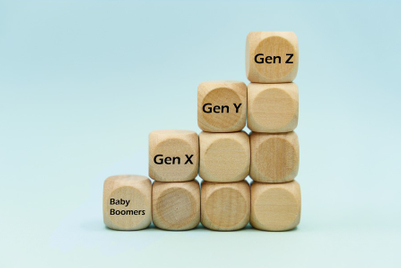
An idiot’s guide to understanding Qualtrics XM, the new experience-management platform launched this month by research software firm Qualtrics, starts with two numbers, explained APAC managing director Bill McMurray in an interview with Campaign Asia-Pacific.
“A Bain study came out with the surprising result that 80 percent of CEOs believe that they deliver a superior experience to their customers...but only 8 percent of the customers believe that they are [getting a superior experience],” said McMurray. The extent of this “experience gap” varies industry by industry, “but at the end of the day we’re talking about an awfully big gap between what CEOs believe they are delivering in terms of experience and what people believe they are receiving. That experience gap is what we want to help businesses close.”
Qualtrics has been in the business of “customer experience” since 2002, when it was founded in the US state of Utah as a data collection and market research company. McMurray joined the firm as its first Asia Pacific employee in late 2014, based in Sydney, and has already grown his team to 75 people, with 600 clients across the JAPAC region, including Volkswagen Group Australia and the health insurance company Australian Unity.
Qualtrics XM is a new, expanded platform that builds on a couple of services the company was already offering, said McMurray. Its USP is that it offers clients one integrated solution to the four different factors the company sees as constituent parts of the experience gap; product experience, customer experience, employee experience and brand experience.

Many organisations today are relying on different vendors to help them improve in each different discipline, he explained, and the integration between these tends to be poor. XM looks at all four at once. “So as you gather information and work out how to do the analysis in each of those four areas, because it's on one platform it's really easy to pull that data together to sort out the insights and take action to improve your business position,” said McMurray.
The market today is disproportionately spoiling people with good experience delivery and disproportionately penalising organisations with poor delivery, he said. This is partly down to millennials, the “always-on” generation who particularly value experiences over things, taking their place in the market. “They are becoming more and more the generation who are doing all the research about what they want to buy online before they step into a store,” said McMurray. “If possible they will transact on a website rather than going into a store. So what that’s changing for organisations is that they really need to think about how to serve those people in the way they want to be served.”
The most important millennial service rule is that websites must be optimised for smart device technology—particularly important in Asia where smartphone adoption levels are so high. Retaining these tech-native customers means getting up close to their online experiences, too: asking a customer why they have left a website with an item still in their shopping basket, for example, and perhaps offering a personalised, time-sensitive discount to attempt to entice that shopper to come back and buy it.
“The whole thing is about how your customers want to be served by you,” said McMurray. “How do they want to get that information, how can you get ahead of their requirements so that when they pursue whatever that path is, you’re already meeting their requirements on the way through. It might be a website; it might be an outstanding store.” McMurray cites Apple as an example of good practice because the company not only developed an excellent website but also a high-performing chain of stores, at a time when it was counter-intuitive to do so, purely because they wanted to give the best experience to the customers they knew would prefer to go into a shop and test out their products rather than buy online.
So how do you collect all of this information about what customers want, without alienating them by asking endless tedious questions? The knack to getting the best insights is knowing which points to pick up on in the customer or employee "journey" and which not to, admits McMurray.
“The better experience you provide for them, ordinarily the more willing people are to provide you with their feedback. The second part of it is that you really shouldn't bombard people at every interaction. They get sick of it. What you’ve got to do is pick the key ones with the highest differentiators for you, those that you really need to understand. It’s also really important that you let them get to the end of their customer journey. That’s when you will ask did they actually get what they intended to get at the start of that journey with you. That’s the big one to pick up.”


.jpg&h=334&w=500&q=100&v=20250320&c=1)
.jpg&h=334&w=500&q=100&v=20250320&c=1)

.jpg&h=334&w=500&q=100&v=20250320&c=1)
.png&h=334&w=500&q=100&v=20250320&c=1)
.png&h=334&w=500&q=100&v=20250320&c=1)









.jpg&h=268&w=401&q=100&v=20250320&c=1)

.png&h=268&w=401&q=100&v=20250320&c=1)